Food Loss Related News
Food Loss Related Publications
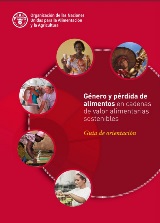
Gender and food loss in sustainable food value chains. A guiding note
01/07/2018
This publication aims to help policy-makers, project designers and field practitioners to conceptualize the nexus between gender equality and food loss while offering practical guidance on and tools for integrating gender concerns into the planning and implementation of food loss studies and reduction strategies and interventions.

On-farm comparison of different postharvest storage technologies in a maize farming system of Tanzania Central Corridor
15/06/2018
On-farm comparison of different postharvest storage technologies in a maize farming system of Tanzania Central Corridor. In Journal of Stored Products Research Volume 77, June 2018, Pages 55–65.
.tmb-th600x450.jpg?Culture=en&sfvrsn=f93a183d_1)
In-farm comparison trial conducted by HELVETAS-GPLP in partnership with IITA Tanzania
01/06/2018
This article explains: moisture of maize grains increased during 30-week storage in hermetic conditions; sitophilus zeamais was more predominant than Tribolium castaneum in stored maize; hermetic storage containers controlled grain damage as good as insecticide; kernel breakage before storage may accelerate insect damage during storage; no risk of low germination; etc.

Effectiveness of Improved Hermetic Storage Structures Against Maize Storage Insect Pests Sitophilus zeamais and Prostephanus truncatus
19/05/2018
A study was conducted for 12 months to evaluate the effectiveness of two improved hermetic storage structures against two maize storage pests Sitophilus zeamais; Prostephanus truncatus at Liwufu Research Station, Malawi. The storages were metal silo and hermetic bag; Actellic super dust was included as a control.

Food loss analysis: causes and solutions. Case study on the cassava value chain in the Republic of Guyana
01/05/2018
An in-depth analysis of post-harvest handling practices of cassava producers, retailers (roadside and mobile market vendors, municipal markets, super-markets), wholesalers, exporters, processors for development of value-added products and consumers, to obtain a more complete understanding of the system-wide nature of quality deterioration and subsequent losses.

Bellagio Statement on Postharvest Management
26/03/2018
The Bellagio Statement is first and foremost a collective commitment to collaborate and scale- up effective actions. It is also a call for large-scale, sustained, coordinated and mutually sup- portive actions from all stakeholders across agri-food systems, including farmers, aggregators, traders, retailers, PHM technology and service providers, financial institutions, governments, etc.
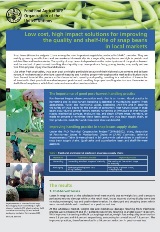
Low cost, high impact solutions for improving the quality and shelf-life of snap beans in local markets
28/02/2018
Snap beans (Phaseolus vulgaris L.) are among the most important vegetables produced in SAARC countries. They are mainly grown by smallholders and are marketed domestically. As a vegetable, snap beans are high in protein and soluble fiber and low in calories.
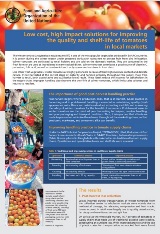
Low cost, high impact solutions for improving the quality and shelf-life of tomatoes in local markets
28/02/2018
The winter tomato (Lycopersicon esculentum Mill.) is one of the most popular vegetables produced in SAARC countries. It is grown during the winter season under protected cultivation using nets to protect fruit from bird infestation. Winter tomatoes are cultivated by small holders and are sold on the domestic market. They are consumed in the fresh form or are used as ingredients in many cooked dishes.
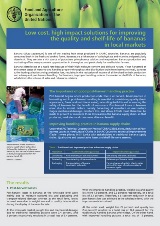
Low cost, high impact solutions for improving the quality and shelf-life of bananas in local markets
28/02/2018
Banana (Musa sapientum) is one of the leading fruit crops produced in SAARC countries. Bananas are popularly consumed both in the fresh and cooked forms. Bananas are a rich source of carbohydrate and vitamins and particularly vitamin A. They are also a rich source of potassium, phosphorous calcium and magnesium. Banana production and marketing offers many economic opportunities in the region, and particularly for smallholder farmers.

Post-harvest management of banana for quality and safety assurance
28/02/2018
Guidance for horticultural supply chain stakeholders. Bananas are grown in Timor-Leste for their economic and nutritional value. A number of banana cultivars are produced by smallholder farmers mainly for domestic consumption. Ripened bananas are consumed as dessert fruit. Immature or green bananas are consumed in the cooked state and are processed into chips. Bananas provide a good source of energy.

Post-harvest management of snap bean for quality and safety assurance
28/02/2018
Guidance for horticultural supply chain stakeholders. Snap bean (Phaseolus vulgaris L.) ranks 6th as the most demanded vegetable in Sri Lanka. It is produced mostly on small farms. The peak harvest seasons for snap beans are March – April and September – December.

Post-harvest management of mango for quality and safety assurance
28/02/2018
Guidance for horticultural supply chain stakeholders Mango is one of the most important and popular fruits in Bangladesh and is referred to as the “king of fruits” because of its excellent overall eating characteristics. It is consumed as a fresh fruit, in the frozen, preserved or dried forms or is processed into juices, purees, chutneys and pickles. Ripe mangoes are best eaten as fresh fruit, usually as a dessert and are used in the production of confectionery, ice cream, and bakery products.

Low cost, high impact solutions for improving the quality and shelf-life of mandarins in local markets
28/02/2018
Mandarin (Citrus reticulate Blanco) is an important fruit crop grown in SAARC countries. Almost all mandarin fruits are marketed domestically, although small volumes are exported by producing countries to other countries within and outside the region. Known for its excellent flavor and nutritional value, the easy-to-peel fruit is commonly consumed in the fresh form or in fruit salad preparations as well as in the form of fresh juice.
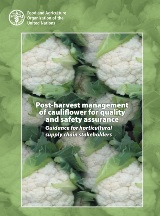
Post-harvest management of cauliflower for quality and safety assurance
28/02/2018
Guidance for horticultural supply chain stakeholders. Cauliflower (Brassica oleracea var. botrytis) is a cash crop and the number one vegetable crop in terms of production and value in Nepal. The popularity and high consumer demand for cauliflower stem from its nutritional quality and health benefits. Cauliflower contains high levels of Vitamins C and B, calcium (Ca), Iron (Fe) and phosphorus (P) and is known to have health promoting benefits.
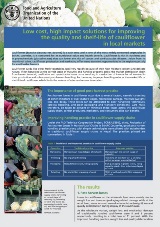
Low cost, high impact solutions for improving the quality and shelf-life of cauliflowers in local markets
28/02/2018
Cauliflower (Brassica oleracea var. botrytis) is a cash crop and is one of the most widely consumed vegetables in SAARC countries. It is consumed for its nutritional value and health benefit. Cauliflower is rich in nutrients and in phytochemicals (glucosinolates) that can lower the risk of cancer and cardiovascular diseases. Aside from its nutritional value, cauliflower production and marketing offer many economic opportunities in the region especially for smallholder farmers.
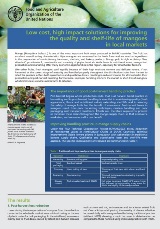
Low cost, high impact solutions for improving the quality and shelf-life of mangoes in local markets
28/02/2018
Mango (Mangifera indica L.) is one of the most important fruit crops produced in SAARC countries. The fruit has excellent overall eating characteristics. Ripe mangoes are consumed in the fresh form and are used as ingredients in the preparation of confectionery, ice cream, sherbets, and bakery products.
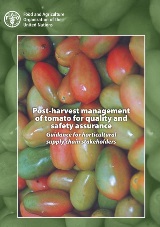
Post-harvest management of tomato for quality and safety assurance
20/02/2018
Guidance for horticultural supply chain stakeholders. Tomato (Lycopersicon esculentum Mill.) is a vegetable crop popularly consumed in Bangladesh. It is commonly used for table consumption in fresh form or as an ingredient in many cooked dishes.
.tmb-th600x450.jpg?Culture=en&sfvrsn=73ca5129_1)
Food loss assessment of cassava, tomato and potato value chains in Cameroon (in French)
01/01/2018
L’initiative Save Food a conçu des études de cas sur les chaînes d’approvisionnement alimentaire pour les principaux sous-secteurs alimentaires des pays en voie de développement. Ces études de cas permettront de générer des données primaires et empiriques sur les différentes causes de perte alimentaire, et d’analyser la faisabilité des différentes...
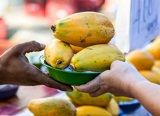
Value-adding for Samoan fruit and vegetable market vendors: Waste less and sell more
01/01/2018
While tropical fruits represent less than 20% of the net horticultural productivity in the South Pacific, they experience disproportionally high levels of postharvest loss. Much of this loss is concentrated at the market-end of the value chain. Inter-island fruit value chains and hose associated with transient and opportunistic fruit harvesting.
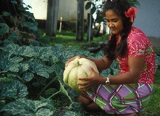
How to Determine the Potential to Increase Vegetable Yield Through Estimating and Reducing Field Losses
01/01/2018
Vegetable growers can use many strategies to increase quality and yield. To boost productivity, they can optimize fertilization, irrigation, and pest and disease management, and they can plant improved varieties. An often overlooked method is to reduce field loss, which can amount to a significant portion of the harvested yield.
